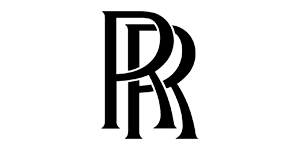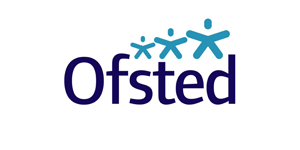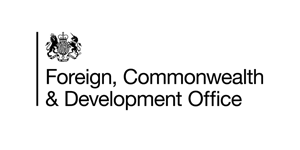Implementing your research project: Writing your report


The final blog in this series looks at writing up your coaching research project in the ‘appropriate style’ (see section 3, below).
1. The writing process
For many people, the prospect of writing their research report can be quite intimidating! It can help to remember that basically what you are doing is to tell a story:
• what you planned to do (and why);
• what you actually did (and how);
• what you found out;
• and what these findings mean.
One way to make it more manageable is to write a draft of sections of your report as you go along. One of the joys of computerised word-processing is the ease with which you can add notes, edit, cut and paste text and generally update your work as required without the major effort of physical re-writing, so use your word-processing functions to maximum benefit. When I get ‘stuck’ on what to write, I put down a ‘stream of consciousness’ (relevant to the topic!) just to get started and then go back with a metaphorical ‘red pencil’ to get rid of or re-organise or re-write the text until I get to the point of being reasonably confident that I am communicating what I want to communicate.
So, once you have defined and clarified your research topic and question(s) write a draft of that section in continuous prose which can be incorporated, with any editing, into the final report. Similarly with the other components of your project, draft the report as you go along. At the end, you can go back through to ensure that the whole ‘hangs together’, is consistent and accurate and tells the story you set out to sell.
It is much easier to write your references as you go along – using a tool such as Reference Manager can be exceptionally helpful, but will probably only be worth the cost and time if you are writing a lengthy report with pages full of references. Getting to the end of writing your report and then trying to ensure that you have all references in the text also listed at the end and in the same format will be a time-consuming and tedious job – time and energy that could be better spent on writing, editing and generally polishing your work.
A key feature of writing your report is creating titles – the title of the full report and the title of each chapter or section. These should be sufficiently interesting to attract the attention of the potential reader, whilst remaining sufficiently serious to reflect the nature of your work and the effort you have put into it.
The final task(s) of writing up your research is very careful proof-reading. It can be quite difficult to spot your own typing mistakes, so asking a friend or colleague to double-check can be helpful. Make sure that proper names are spelt correctly and that the grammar is both correct and appropriate to the audience for whom you are writing.
2. What should you include in your research report?
The key components of a research report are: a description of the aims and objectives of the research; the methods used to collect and analyse data; the findings and conclusions. Depending on the size of the project and the audience of the report, research reports may contain:
• An introduction – describe/explain what you are going to write about (best left until last, when you have completed your research and know what it is you are writing about!);
• Aims – describe what you set out to do, what your objectives were;
• Rationale – your reasons for carrying out the research and the reason why the research is important – this latter may involve a detailed review of the literature;
• Methodology – how you collected your data and why you choose a particular method/methods of data collection; and the methods you used to analyse your data once collected; information about yourself or the team of people involved in carrying out the research project and their skills/expertise and knowledge may be relevant here;
• Findings (i) – be clear about any limitations of the data you collected – response rates, statistical issues, limitations to the results – e.g. can you generalise from the data or is it a ‘snapshot in time’?; may a differential response rate from different groups of people bias the results, and how you will compensate for this in your analysis or the conclusions you draw for the data?;
• Findings (ii) – the results of your data analysis;
• Conclusions – drawing out the implications of your findings for coaching theory and/or practice;
• Recommendations – if relevant to your research – these may be directed towards those who purchase coaching services; leaders/managers in organisations where coaching is a preferred management style; practising coaches, internal or external; those running their own coaching practice.
• References.
• Appendices – again, if necessary.
3. The appropriate style.
By this, I mean that you should think about the intended audience of your research report and adjust your writing style accordingly. For an academic audience you should retain academic language and ensure that references are always made when referring to another’s work (published or unpublished), including your own (cross-reference within the report or other work you have written). Referencing should follow an accepted standard, such as the Harvard method. Academic work requires a high level of detail and is likely to be quite lengthy. For academic work a higher proportion of passive verbs, with longer sentences and paragraphs will be acceptable. If you plan to submit your research report for publication in an academic journal, an ‘abstract’ will be required – this is a summary of the key points of your research written in an academic style.
A management report is likely to be shorter and ‘punchier’ with less detail (although sufficient to support your conclusions and recommendations) and less research jargon, with more focus on the practical, management implications of the research. A short summary of research methods and analysis is appropriate, with reference to where greater detail can be found. Greater use of bullet points, short sentences and active verbs are more appropriate for a management report. Recommendations may be particularly relevant to a management report.
For a report for the professional reader you should avoid research jargon as far as possible or, if the use of technical language is essential to communicate your points, a clear explanation or definition should be provided when technical terms are first used. Again, this type of report is likely to include a summary of your methods and findings rather than all the detail, with the focus on the implications for professional practice – your findings, conclusions, and where relevant, recommendations.
It is of course quite possible that you could write up your research in more than one style. Again, word-processing makes it a great deal easier to write up the same project for two or three audiences.
4. And finally…
This is the last in this series of blogs – which I hope you have found informative and useful. The key text with much more detail and technical information which I have used for some of the ideas in these blogs is: M Saunders, P Lewis, A Thornhill (2000) Research Methods for Business Studies 2nd edition.






